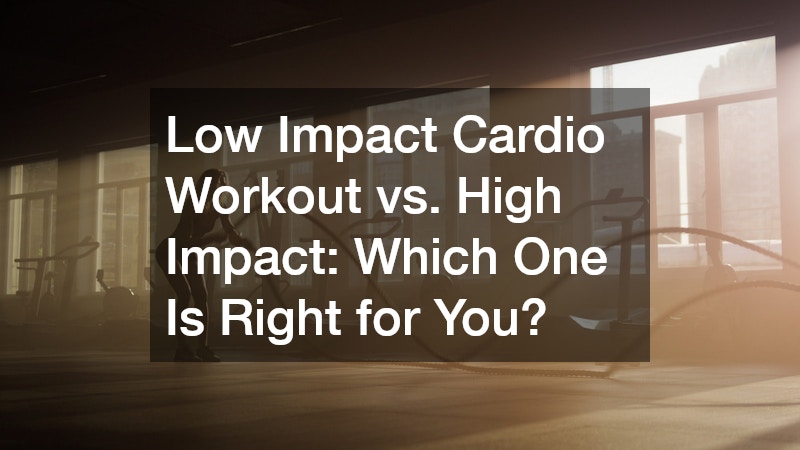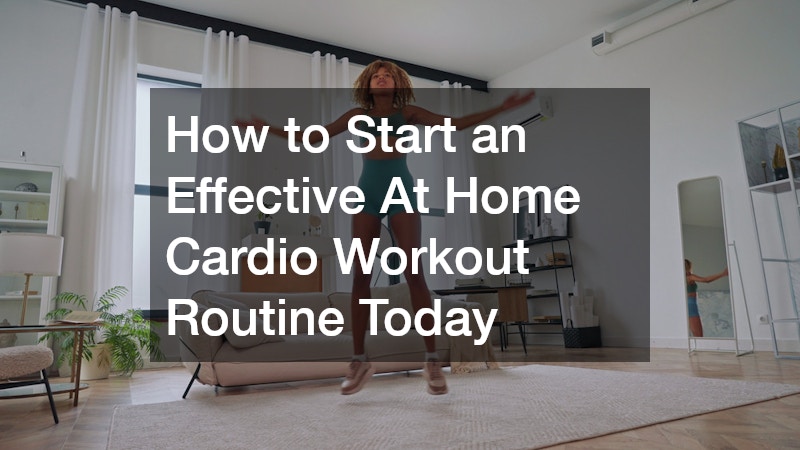
Whether you’re just getting into fitness or you’re a seasoned gym-goer exploring new ways to stay healthy, choosing the right cardio routine is essential for your long-term success. Among the most popular options are low-impact and high-impact cardio workouts, each offering distinct benefits. But which one truly aligns with your goals, lifestyle, and body needs?
In this article, we’ll explore the key differences between low and high-impact cardio, compare their pros and cons, and help you decide which type of exercise fits best into your health-conscious routine. Whether you’re recovering from injury, easing into fitness, or chasing performance, the right cardio can make all the difference.
What’s the Difference Between Low and High Impact Cardio?
At its core, the difference lies in how much stress the movement puts on your joints. Low-impact cardio involves exercises that keep at least one foot on the ground at all times, reducing stress on the knees, hips, and ankles. In contrast, high-impact cardio includes movements like jumping, running, or hopping, which involve more jarring, repetitive impact on the joints.
Here’s a quick breakdown:
- Low Impact Cardio Examples: Walking, swimming, cycling, elliptical training, dance-based workouts, or rowing.
- High Impact Cardio Examples: Running, jumping rope, HIIT with plyometric movements, box jumps, and aerobics.
Understanding this distinction is crucial for selecting a workout that’s not only effective but also safe and sustainable.
Who Should Choose a Low-Impact Cardio Workout?

Low-impact cardio workouts are ideal for many people, especially those with joint issues, beginners, seniors, or individuals recovering from injury. These workouts provide all the cardiovascular benefits without the added stress on your body.
Benefits of Low-Impact Cardio:
- Joint-friendly: Perfect for those with arthritis, past injuries, or chronic pain.
- Sustainable: Easier to maintain over long periods, making it great for long-term health.
- Great for beginners: Ideal for easing into a consistent fitness routine.
- Adaptable: You can do a low-impact at-home cardio workout with no equipment.
Here are some reasons to go low-impact:
- You’re recovering from an injury.
- You’re new to exercise and want a safe starting point.
- You prefer gentle but effective movements.
- You want to stay active without burning out.
If these apply to you, low impact might be the best fit for your lifestyle.
Is High Impact Cardio Better for Weight Loss and Endurance?
High-impact cardio has a reputation for being intense, and for good reason. These workouts elevate the heart rate quickly and burn more calories in a shorter time. If you’re physically able and looking to boost endurance, cardiovascular health, or achieve faster weight loss, high-impact training could be the way to go.
Benefits of High-Impact Cardio:
- Calorie burn: Helps burn more calories in a shorter duration.
- Improved cardiovascular health: Elevates heart rate quickly for better conditioning.
- Builds bone density: Weight-bearing, high-impact exercises stimulate bone growth.
- Boosts performance: Great for athletes and those with higher fitness goals.
However, high impact isn’t for everyone. Consider skipping it if:
- You have knee, hip, or back issues.
- You’re new to working out or haven’t built foundational strength.
- You prefer low-risk, low-fatigue workouts.
While the rewards are substantial, so are the demands on your body.
How to Combine Both for the Best Results?
If you’re torn between the two, the good news is you don’t have to choose just one. Many fitness professionals recommend blending low and high-impact cardio workouts into your weekly routine to enjoy the full spectrum of benefits.
Try This Weekly Mix:
- Monday: Low impact (brisk walking or stationary bike)
- Tuesday: High impact (HIIT session or running)
- Wednesday: Rest or yoga
- Thursday: Low impact (swimming or elliptical)
- Friday: High impact (jump rope, dance cardio)
- Saturday/Sunday: Flex day for light stretching, a nature walk, or recovery
This approach helps minimize overuse injuries while keeping your workouts engaging and dynamic.
Choosing the Right Cardio Based on Your Goals

Ultimately, the choice comes down to your fitness goals, physical limitations, and personal preferences. Ask yourself:
- Do I have existing joint issues or pain?
- Am I training for endurance, weight loss, or general health?
- Do I prefer high-energy sessions or something more mellow?
- How much time can I realistically commit?
Low-impact cardio workouts offer safety, sustainability, and are accessible to most. High-impact cardio brings power, intensity, and quick results—ideal if your body can handle the load.
Final Thoughts: Which One Should You Pick?
Both low and high-impact cardio workouts have their place in a balanced fitness plan. For health-conscious individuals, the key is to listen to your body. Don’t shy away from high impact if you’re capable and up for the challenge—but don’t underestimate the value of steady, joint-friendly low impact options either.
Whether you’re sweating it out in a high-intensity HIIT session or breezing through a low-impact walk at home, the best cardio is the one you’ll stick with—because consistency is what truly drives health and wellness.


